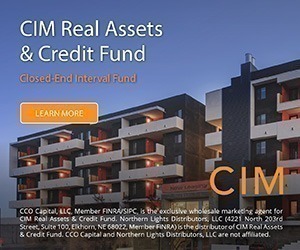Four and a half years after the pandemic sent workers home, the office property bill is finally coming due.
The market for office buildings — already reeling from higher vacancy rates amid the rise in remote-work policies — has been crushed by high borrowing costs, and while the Federal Reserve is at last preparing to cut interest rates, it may be too little, too late. Investors, banks and property owners are now beginning to accept that some commercial buildings will never recover their pre-pandemic value, and that’s leading to a steady drumbeat of distressed sales.
The market’s troubles have caught the attention of Congress — with one New York lawmaker calling it a “ticking time bomb” for banks as nearly $1 trillion in commercial real estate loans are coming due this year. Faced with vacant office buildings and a shortage of millions of homes to meet demand, a bipartisan group of lawmakers is trying to make it easier for developers to convert underused properties into housing.
“This would absolutely help lenders recoup some of their investment while allowing them to align with the current needs of the market,” said Rep. Mike Carey (R-Ohio) who introduced a bill this summer establishing a temporary 20 percent tax credit for qualified property conversion expenditures.
“The pandemic caused a seismic shift in work patterns,” said Carey, who offered the bill with Rep. Jimmy Gomez (D-Calif.). “We see these vacant office buildings as a well of untapped potential.”
Over the last four months, seven office properties were sold at a staggering loss of more than $100 million each, up from just one such sale in the first three months of the year. Banks and investors will have to take significant haircuts — one midtown Manhattan office building sold at a 97.5 percent discount in July — and operate on tighter margins as the market resets. That will potentially squeeze lending elsewhere just as the economy is slowing.
New York state lawmakers have also sought to stanch the bleeding by encouraging conversions to housing: New York City developers who set aside a quarter of an office conversion’s units for affordable housing can qualify for a 90 percent tax abatement.
Still, conversions take time, and many office buildings are unsuitable candidates.
“It will happen when it can, and it’s a good thing,” said Lisa Pendergast, executive director of the Commercial Real Estate Finance Council. “It’s just not enough to save the office market in the near term.”
Fed Chair Jerome Powell has voiced concern, saying commercial real estate risk “will be with us for some time, probably for years,” in Senate testimony this summer. The Fed is expected to cut interest rates this month for the first time in more than four years.
Roughly $930 billion in commercial real estate loans will come due this year, according to the Mortgage Bankers Association. Commercial mortgages are financed on shorter terms than residential mortgages, often with balloon payments, or large lump sum payments, due at maturity. Many of those loans will have to be refinanced at a substantially higher interest rate than they carry now.
About 70 percent of bank-held commercial real estate mortgages sit on the balance sheets of regional and smaller lenders — a source of alarm for regulators, since smaller banks don’t have the capital reserves or other lines of business to fall back on that larger banks have.
The wave of debt coming due “puts extreme pressure on U.S. regional banks that are weighed down by loans for commercial buildings that are worth a fraction of their initial price, making them vulnerable to bankruptcy,” Carey said.
Banks are the largest lenders of commercial mortgages and hold about $3 trillion in commercial real estate debt. Some 98 percent of banks engage in commercial real estate lending, according to the Federal Deposit Insurance Corp., with those loans making up the largest loan portfolio type for nearly half of all banks.
“Excessive exposure to commercial real estate remains a ticking time bomb within the banking system,” said Rep. Ritchie Torres (D-N.Y.). “An interest rate cut might ease the symptoms, but it will not cure the disease itself. ‘Extend and pretend’ can delay a crisis but it cannot make it magically disappear.”
In the initial turmoil surrounding pandemic-hit property values, lenders and borrowers were often able to work out loan extensions with the hope that property prices would recover — “extending and pretending.” Sales ground to a halt, making it hard to determine a given property’s true value. Commercial real estate lending declined 47 percent last year, according to the MBA.
In the meantime, “operating expenses for all types of buildings have gone up dramatically in the last few years, particularly insurance premiums,” said Jeff DeBoer, president and CEO of the Real Estate Roundtable, a trade group.
The past couple of years were marked by “uncertainty about where rates would go, and a pullback in deal activity,” said Jamie Woodwell, vice president and head of commercial real estate research at the MBA. “We’re starting to see some folks coming off the sidelines on that and sort of accept where rates are now and go ahead and act.”
Now that the true, lower, value of certain buildings is becoming clearer, owners often have to commit additional capital to get a loan renewed.
Three out of four office properties “don’t end up being refinanced without an additional equity infusion from the owner,” said Stijn Van Nieuwerburgh, a professor of real estate and finance at Columbia University’s business school. “So the question is what does the owner do; is it throwing good money after bad?”
Of the roughly $4.7 trillion in outstanding commercial real estate debt, office properties account for about $740 billion, according to MBA.
“My baseline scenario is this will be a protracted slump rather than a virulent crisis, but there’s always things that can happen in the world that accelerate these things,” said Van Nieuwerburgh. “I am bracing for a continued weakening in commercial real estate, with the risk of a sharper correction.”
The delinquency rate on commercial mortgage-backed securities ticked up in July, with the office sector accounting for nearly two-thirds of newly delinquent loans, according to Trepp data. The office delinquency rate rose above 8 percent for the first time since November 2013, as about $1.9 billion in office loans became newly delinquent in July.
The slow-motion nature of the reset is a double-edged sword, according to Scott Rechler, CEO of New York landlord RXR, which defaulted on a $240 million loan tied to a Manhattan building last year.
”This storm has been hanging off the coast for some time, and the fact that it hasn’t sort of hit, sure, is good,” Rechler said. “But on one side of it, as interest rates have been higher for longer, it’s feeding the strength of that storm, right? So it makes it more like a hurricane Category 5 storm, when it comes ashore.”
On the other hand, he said, the delayed onset of the storm — via loan extensions and adjustments — has allowed banks to build up reserves. Now, he said, more banks are moving from the “denial” stage of grief to “acceptance” and marking down their holdings.
“There is a clear acknowledgment that if you’re kicking the can — this is different than 2008 — that this is not going to resolve itself in just, you know, prices and values re-inflating because of an injection of capital into the system,” Rechler said.
“So at some point or another, the day of reckoning needs to come,” he added. “I think it’s here.”











